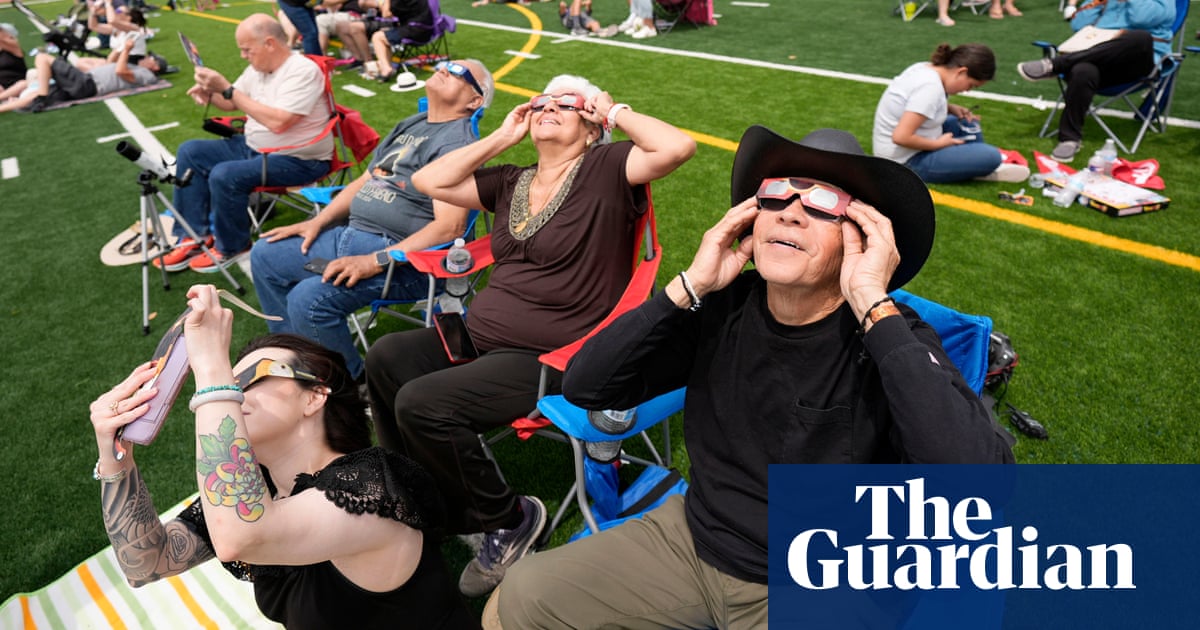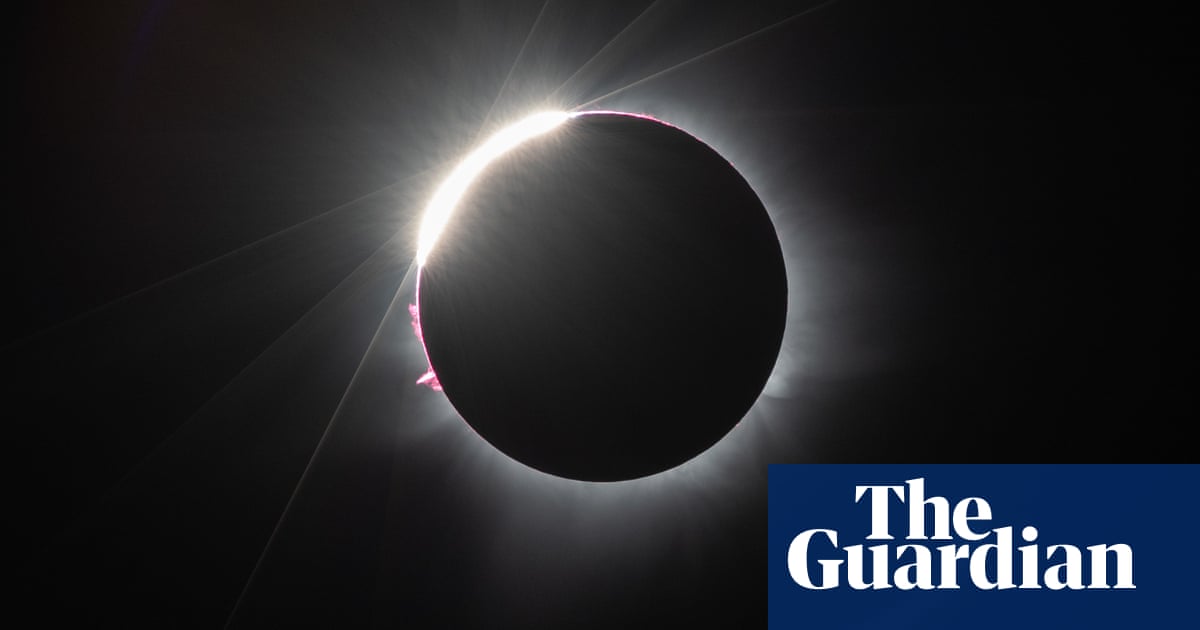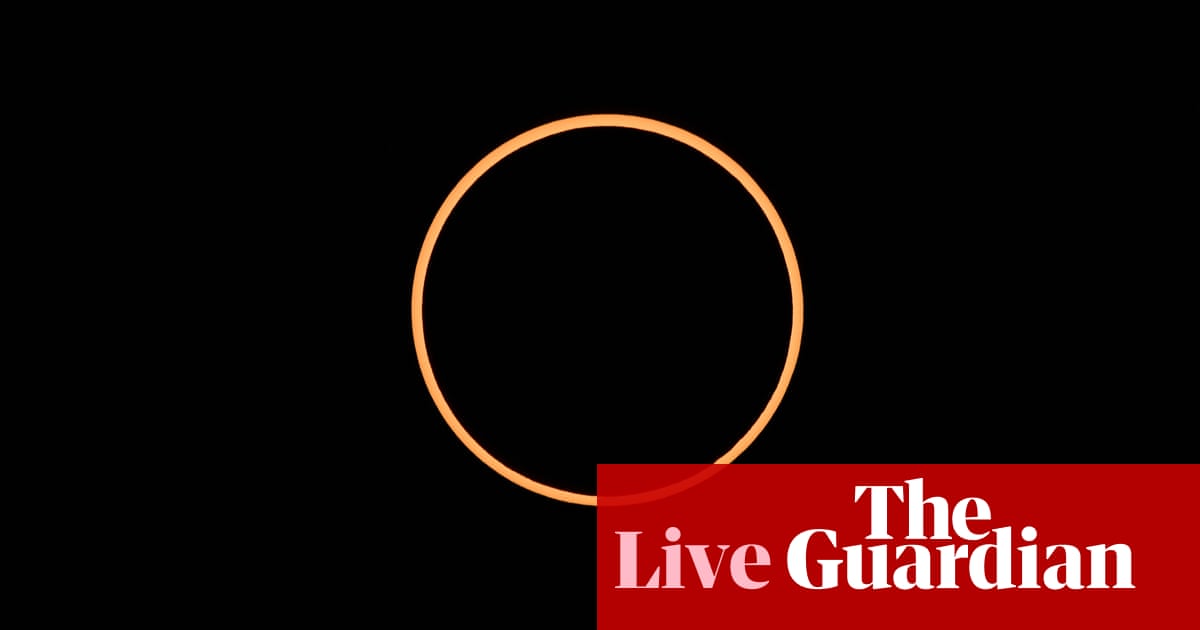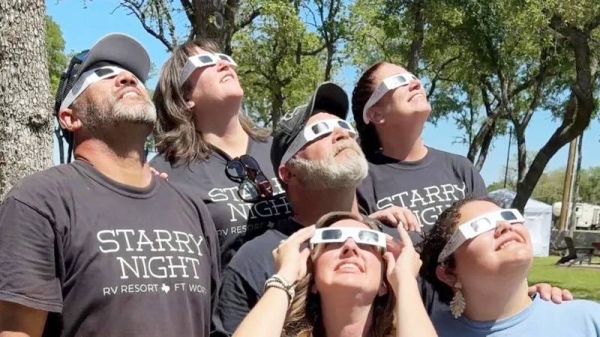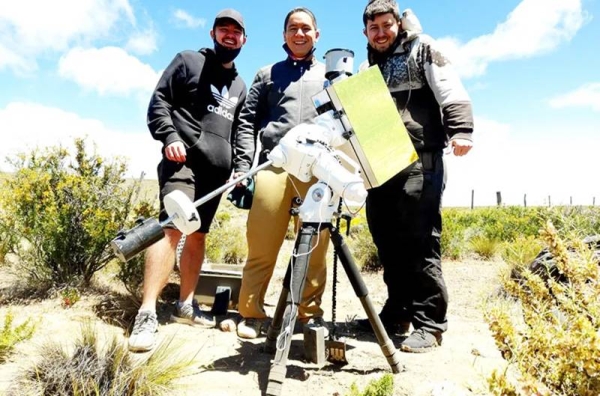
The ethereal spectacle of a total solar eclipse swept across North America on Monday afternoon, giving tens millions of people in Mexico, the US and Canada the chance to witness a rare and dazzling celestial show.
Almost 32 million people were in the path of totality as the moon’s shadow crossed the Mexico-Texas border at lunchtime and traversed 15 states over the next hour and a half, although many, especially in the south and midwest, were denied a clear view by low clouds and rain.
Those who did get to experience it were treated to a remarkable and surprisingly emotional display that won’t be seen again in the US until 2044. Cities were plunged into sudden darkness, chilled by a precipitous drop in temperature, and felt the stillness of twilight in the middle of the day.
“There’s something very mysterious about a total solar eclipse, when literally day turns to night, animals start to behave differently, and we see changes in the Earth’s atmosphere,” Pam Melroy, the deputy head of Nasa, and a retired astronaut who has degrees in astronomy and planetary sciences, told CNN.
“It’s a mystical, mysterious experience. And I love the thought that millions of Americans stood together today, looking up into the sky.”
Tourism officials believe at least 4 to 5 million traveled from other parts of the US to witness the show, making it the country’s biggest travel day of the year and bringing in an estimated $1.5bn economic boost.
Many were up before dawn to stake their place, and cities from Texas to Maine, as well as others outside the path of totality, hosted watch parties and gave away free eclipse glasses.
Joe Biden posted a message from the White House, calling the eclipse an event “worth marveling at”, and urging Americans to use safety glasses to look at the sun.
The Dallas-Fort Worth region was the largest metropolitan area on the path of totality, making north Texas a major destination and creating potential headaches for locals. The cloudy weather left some scrambling at the last minute to change plans and head for clearer skies, but for much of north Texas totality itself was clear.
Ignas Barauskas traveled to Texas from Lithuania, arriving at midnight, just hours before the eclipse began.
“Better than all expectations,” he told the Guardian, after the clouds parted and Dallas experienced almost four minutes of blackout.
“Everyone was screaming, like a concert,” he added.
For many, the experience proved costly, with surging air fares and exorbitant hotel rates. Others found long-held bookings canceled and resold to new customers at up to three times their original prices.
Such was the interest in the eclipse that numerous states and municipalities declared states of emergency in expectation of massive crowds. The entire event, however, appears to have passed off peacefully, amid warnings from US intelligence of a rise in the terror threat, particularly for large gatherings, following last month’s deadly attack on a Moscow concert hall.
Nasa live streamed the event for those who could not see the eclipse directly or lived outside the path of totality. Almost everywhere in North America experienced a partial eclipse of varying percentages depending on the proximity to its center track.
The agency also conducted science experiments. It fired rockets into the moon’s shadow to study how Earth’s upper atmosphere is affected by the momentary dimming of sunlight and the possible impact on communications systems, and it harnessed an army of citizen volunteers to capture images of the solar corona during totality, then help analyze them afterwards.
Meanwhile, at several zoos, researchers joined public volunteers to watch the behavior of animals. During previous eclipses, giraffes ran around frantically, tortoises started rutting and gibbons sang and barked, although television images of zebras at Dallas zoo on Monday showed them largely unimpressed by the event.
The most recent total solar eclipse in the US was in 2017, but an interval of only seven years is unusual. This one had a longer track, and a wider shadow of totality than seven years ago because the moon was closer to Earth.
The time of totality in any given location was also longer. In 2017, the longest duration anywhere was two minutes and 42 seconds. Today it was four minutes and 28 seconds in Torreón, Mexico, while almost every place along the path experienced between three and a half to four minutes of totality, even if those below could not always see the eclipse.
The next total solar eclipse anywhere in the world is 12 August 2026, covering large areas of the northern hemisphere, with totality limited to Greenland, Iceland, Spain, Russia and a small area of Portugal. The UK will see a partial eclipse of more than 90%.
Residents of the mainland US must wait until 22 August 2044, when a total eclipse will be seen in North and South Dakota and Montana, plus northern Canada.
Following that, it is almost exactly one year until the next coast-to-coast total eclipse in the US, on 12 August 2045, spanning California to Florida.




